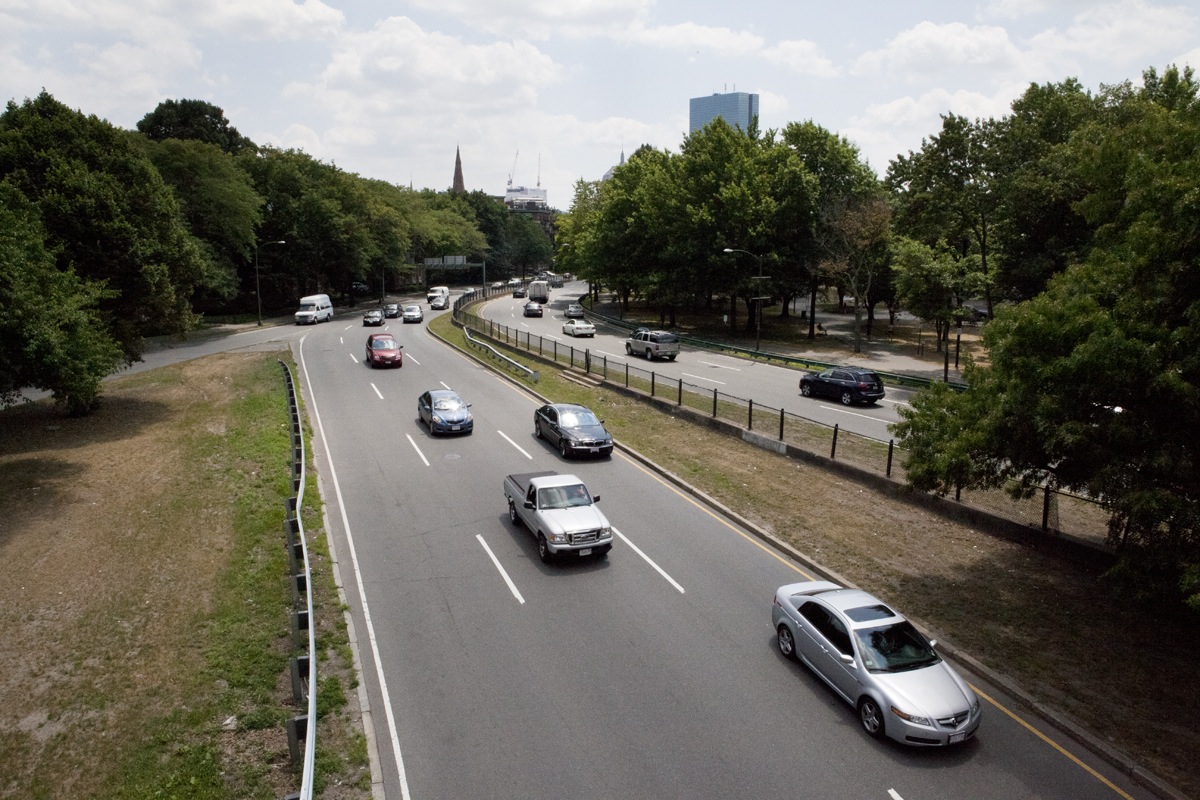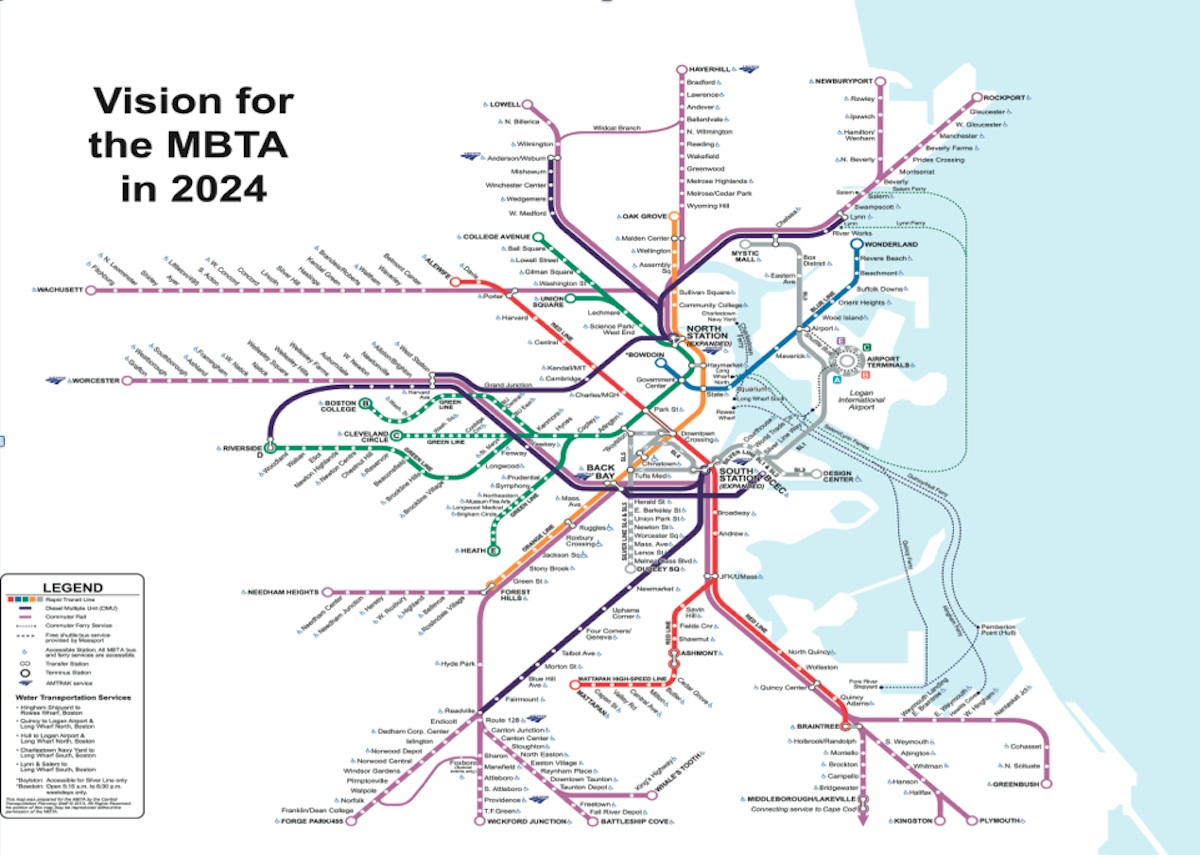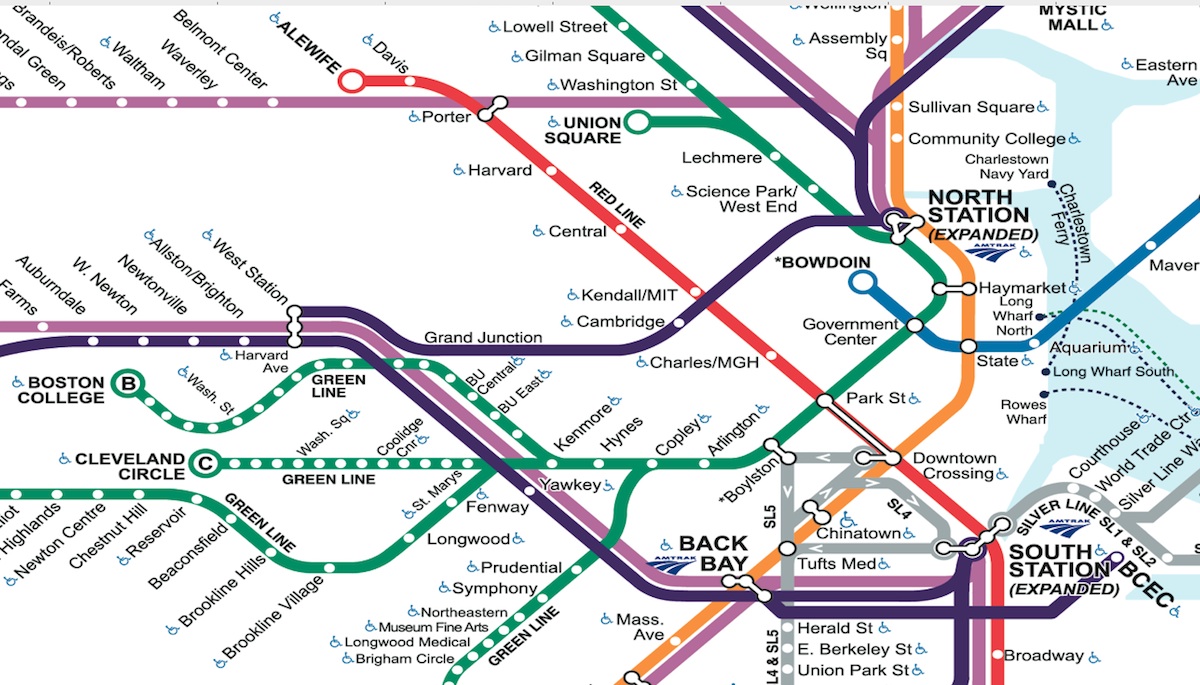Take A Ride On The MBTA’s ‘New Indigo Line’ In 2024

Photo By Samantha Carey
The Massachusetts Department of Transportation (MassDOT) has big plans for the Commonwealth over the next five years, including shortening commutes, bolstering the community, and adding specialized trains to the “Indigo Line,” which ideally, one day, would make stops in Allston, Cambridge, and stretch all the way to the North Shore.
On Thursday afternoon, MassDOT released its Capital Investment Plan for 2014 through 2018, which is an outline of how state officials plan to spend money, trying to fix the problems that plague pedestrians, cyclists, commuters, and drivers.
In a 65-page document, MassDOT Secretary Richard Davey outlined the goals of the agency, which includes projects on the state’s highways and bridges, as well as critical infrastructure changes along the tracks of the MBTA and Commuter Rail system. According to the report, over the next five fiscal years, MassDOT plans on spending roughly $12.4 billion on transit projects across the state.
Roughly $835 million of that money will be going toward new Red and Orange line cars, which are scheduled to hit the tracks sometime in 2019. Davey said the state is also determined to use that money to fix signals on the MBTA, which are often the cause of serious transportation delays for commuters. An additional $1.3 billion is headed toward the Green Line extension, which will bring the train cars to new parts of Somerville and Medford.
While those projects are nothing new, one interesting highlight of the report is the suggested addition of Diesel Multiple Unit vehicle services, known as DMUs, to the “new Indigo Line.” In his report, Davey notes that the DMU funding will establish the Indigo Line, using the Fairmount corridor to start.
Right now, the Commuter Rail only makes five stops between Readville and South Station along that particular line, cutting through Downtown Boston, South Boston, Roxbury, Dorchester, Mattapan, and Hyde Park.
As the Fairmount Indigo Planning Initiative notes, the T has been working on adding new stations along that route to better serve residents in those neighborhoods. Once they are all opened, MassDOT hopes to add the DMUs, which would run along the current Fairmount tracks, with more stops being made at the new stations to provide “faster, more reliable service.”
If all goes according to plan, in the next 10 years MassDOT would like to roll out their “vision for the MBTA in 2024,” where additional DMU lines would run alongside existing Commuter Rail tracks and make connections to existing stations a lot easier.
According to a map produced by MassDOT as part of the report, the Indigo Line would expand in the next decade and make loops into Fort Point, near the Convention Center, as well as provide trips to Back Bay, and introduce a connector that could swing into Cambridge before making its way to North Station from Allston. There’s also a proposal to have DMUs travel alongside the Lowell and Rockport Lines, connecting to Boston.
Here’s the map (click to enlarge):
A closer look at the map, specifically highlighting major points in the city, shows you how hopping on a proposed DMU train on the Indigo Line would help skip multiple station transfers. The darker purple line indicates where the DMUs would run. (Click to enlarge):
According to a Globe report that detailed the “Track 61” project, where an independent DMU line would run service from the Seaport District to Copley, a DMU train car costs around $4 million. In Davey’s capital plan, MassDOT would like to put $252 million toward DMUs—as well as toward expanding Silver Line services—to provide “reliable public transit to underserved communities in the Fairmount Corridor of Boston, Chelsea, and the North Shore.”
No DMUs currently operate in Massachusetts, according to T officials. But the Indigo Line will come into play once the DMUs are active, and the T increases the frequency of service on the Fairmount line first.
The overall proposed five-year Capital Investment Program, including the vision to bring the Indigo Line to life, is the first comprehensive plan published that looks at all infrastructure-related spending, instead of specific projects, said Davey, and builds from a prior 2009 report. It outlines how money is allocated for certain investments, and where they would like to see additional funds siphoned to.
“In other words, this represents the allocation of estimated state and federal revenues for the reconstruction, maintenance, and development of our statewide highways, bicycle and pedestrian paths, bridges, local roads, bus and rail networks, and airports for the next five fiscal years,” Davey said in the introduction to the report. “The [plan] is more than just numbers on a page. It reflects a commitment by this administration to leave a better Commonwealth for current and future generations.”
The projects outlined in the report are currently under Patrick’s administration, and Davey said it is critical that the incoming administration, when he leaves office, try and carry some of these recommendations forward.




